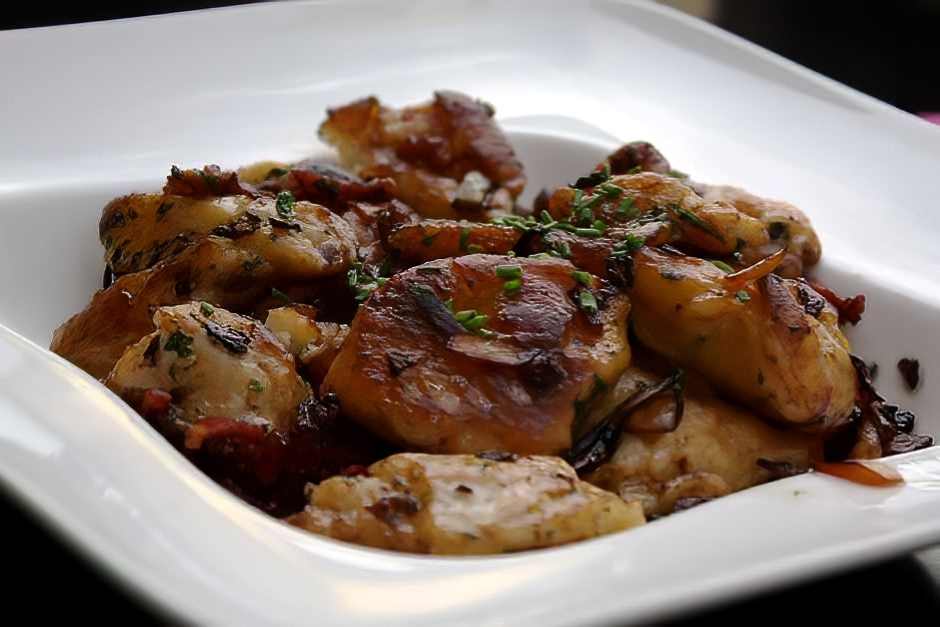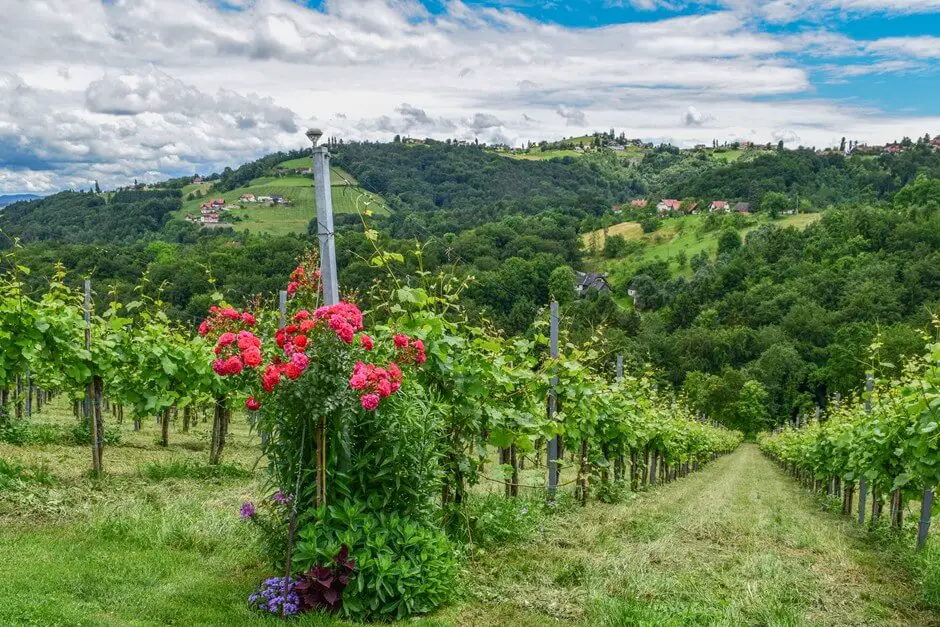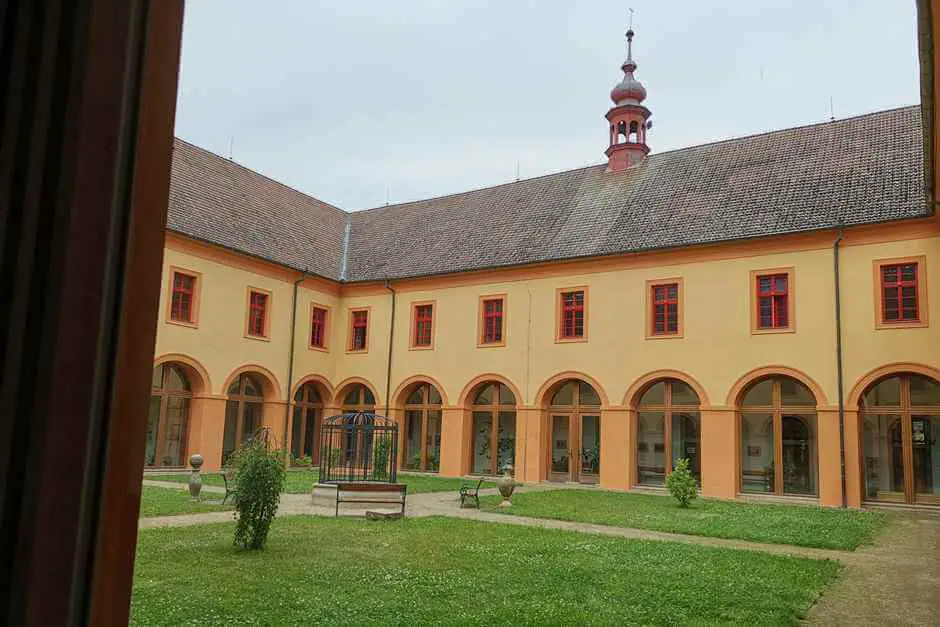Luxembourg Specialties you should know
Luxembourg is a small country, but it has a variety of delicious dishes to offer. Many of these dishes are typical of Luxembourg and have a long tradition. You should know these dishes when traveling to Luxembourg. Our culinary journey through Luxembourg showed us how important it is to know dishes from your destination. For this research, the Tourism Authority of Luxembourg invited us as Gourmet travel bloggers. Before our trip, we knew that Luxembourg has culinary specialties.
Our personal experiences with Luxembourg specialties
What we didn't know, however, were the names of these dishes. It was only when we got to the restaurants that we realized we should have familiarized ourselves with this before we arrived. Because when we got there, we didn't understand a word on the menu. Menus are written in Luxembourgish. This may be understandable for visitors from the neighboring Saarland, but it certainly wasn't for us, even though the country is multilingual and almost everyone speaks German or French. And so we asked the waiter to explain each dish to us in detail before we ordered. This is usually not ideal on our trips as travel bloggers, because time is usually very short on these trips.
There was Grompere Kichelcher. Kuddelfleck. Andouillette. Träipen. Kallefskaap. I could continue the list of Luxembourg's culinary specialties. But what is that? We were able to deduce some things after getting used to Luxembourgish, but not everything. We couldn't have the waiter translate the menu for us every time. By the time he finished his translation, we had already forgotten what the dishes were. Therefore, our visits to the restaurant turned out to be an adventure. It was always a surprise what ended up on our plate. That's why you should definitely remember a few specialties of the country. This makes traveling there easier.
Map of our culinary journey through Luxembourg
Traditional Food in Luxembourg
In Luxembourg, traditional food is more than just a necessity - it is an important part of culture and social life. Luxembourgish cuisine is characterized by its diversity and its unique blend of different culinary traditions. Luxembourgish cuisine has been significantly influenced by the neighboring countries of France, Germany and Belgium. This created a fusion of flavors and techniques that create unique dishes.
In Luxembourg you will also find a large selection of regional products that are often used in the kitchen. This includes fresh vegetables such as potatoes, beans and cabbage, as well as meat and sausage products such as pork, lamb and Mettwurst. Luxembourgish dishes are often hearty and filling. Therefore they are perfect for cold days.
In addition, Luxembourg also offers a variety of international cuisines, from French to Italian, from Asian to Mediterranean. Cities have a wide range of restaurants and cafes where you can enjoy the different flavors of the world. And don't forget the Luxembourg wines! Luxembourg is also known for its excellent wines, particularly Riesling and Crémant, a sparkling wine. These wines are the perfect accompaniment to the country's delicious dishes.
Overall, Luxembourg offers a wealth of culinary experiences, from traditional dishes to international specialities. Whether you're a foodie or just want to explore the local cuisine, Luxembourg has something for everyone.
The Luxembourg top chef Lea Linster – The Luxembourg kitchen today
Lea Linster is Luxembourg's star chef. In one of her previous restaurants, she served down-to-earth Luxembourg cuisine. Lea Linster places great value on the simple dishes of her native Luxembourg. She even turns mashed potatoes or pea soup into culinary highlights. In her Cookbooks* (Advertisement) she not only presents recipes from haute cuisine, but also the simple cuisine of Luxembourg. Luxembourg cuisine today also draws on the country's traditional recipes.
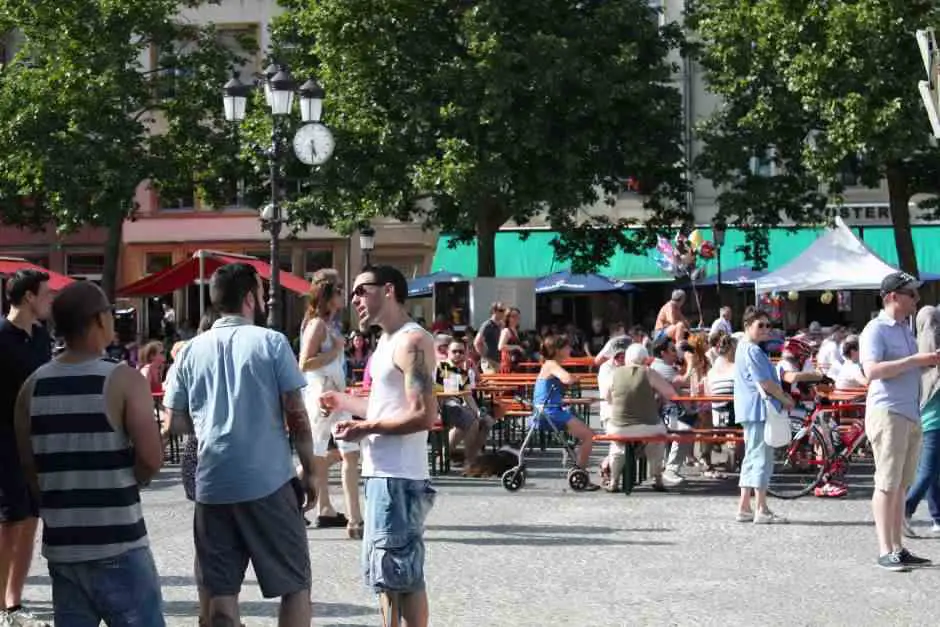
Restaurants in Luxembourg: Where to visit
If you want to discover Luxembourg's culinary delights, you need more than just good tips—you need real recommendations. Here are some of the hottest restaurants right now—each unique in its own way.
🥘 Restaurant recommendations for authentic Luxembourgish cuisine
1. "Apdict" in Luxembourg City – An old pharmacy, reimagined. The cuisine is creative, modern, yet rooted in local roots. The chef plays with regional ingredients and brings surprising combinations to the plate.
2. "My Language Souritin Moutfort – With two Michelin stars, it's a real experience. But don't worry: It's not stuffy. The atmosphere is relaxed, the service warm. The menus? Works of art.
3. "Le Quai Steffen" in Luxembourg train station – ideal for a quick bite. High-quality brasserie cuisine with a focus on regional classics. Perfect if you're looking for good food without a lot of frills.
4. Around Dierfgen in Luxembourg City – This charming restaurant in the heart of the Old Town serves classic Luxembourgish dishes in a cozy atmosphere. Traditional specialties such as Kniddelen and Gromperekichelcher are particularly recommended.
Whether fine dining or a relaxed lunch, Luxembourg has something for every taste. And the best part? Quality and hospitality are paramount. So just try it out, sample everything, and enjoy.
New culinary trends from Luxembourg: Between tradition and innovation
Do you love classics like Gromperekichelcher or Judd mat Gaardebounen, but want to know what's happening in Luxembourg today in terms of cuisine? Then it's worth taking a look at Luxembourg's new food scene. Young chefs are reinterpreting traditional dishes. Instead of heavy and hearty, dishes can now be surprisingly light.
A good example: street food with a twist. In Luxembourg City, you'll find food trucks serving vegan "kniddelen" (dumplings made from flour dough) with exotic spices. Or how about a mettwurst bao with kimchi? Crazy—but really good.
Fermented products are also making a comeback. Small factories are producing pickled vegetables that are even finding their way into trendy bistros.
Another trend: local, seasonal ingredients. Many restaurants rely on vegetables from their local organic farm. This makes the cuisine more authentic—and simply more flavorful.
Luxembourg remains true to its culinary culture, but takes bold steps forward. If you're curious, try a menu that combines tradition and trend on your next visit. You'll be surprised by how diverse this small gourmet nation has become.

Luxembourg Specialties
We fondly remember our breakfast with a view of the old town.
Luxembourg typical products
In Luxembourg, we discovered some typical products that characterize the country's culinary heritage. The region is known for its wines and crémants, which come from the slopes of the Moselle. We also sampled Luxembourg sausage, a specialty with a strong flavor. Luxembourg honey, often produced by small beekeepers, was a particular highlight.
Local cheeses, such as "Kachkéis," also reflect the diversity of Luxembourgish cuisine. Kachkéis is a melted cheese that is highly appreciated in Luxembourg as a spread or dip. Its velvety texture and mild, slightly spicy flavor make it the perfect accompaniment to fresh farmhouse bread or crispy pretzels. It is often refined with a touch of mustard or finely chopped onions, which adds an additional flavor dimension.
However, the matter of food gets more complicated with the main meals. The names of the dishes are not as easy to recognize as croissants or brioches. Some names can be derived from Luxembourgish into German after we get used to the pronounciation. With others, however, it is more difficult.
If you're in the mood for a salad, Feierstengszalot, a cold beef salad, is just the thing. Huesenziwwi, braised rabbit with chocolate sauce, is also a Luxembourg delicacy.
Another specialty is the "Gromperekichelcher." These crispy potato pancakes are golden brown on the outside and conceal a soft, savory filling of grated potatoes, onions, and fresh herbs. They smell enticingly of fried butter and are traditionally served hot, often accompanied by a dollop of apple sauce, which perfectly complements the savory flavor.
And not to be forgotten are the “Kniddelen”, small dumplings made from potato dough or flour dough, which are often served as a side dish to meat dishes.
Sweet specialties in Luxembourg
Luxembourg offers a variety of sweet specialties that will delight every palate. In the local bakeries and patisseries you will find a wide selection of delicious treats. The traditional recipes, which are often passed down from generation to generation, are particularly popular. Whether fine pastries or lovingly prepared desserts, the variety is impressive. A visit to Luxembourg would not be complete without trying these sweet delicacies.
Typical sweets in Luxembourg
- Bamkuch: A traditional tree cake, often served on special occasions.
- Quetschentaart: A plum cake that is especially popular in autumn.
- Luxemburgerli: Small macaroons that originally come from Switzerland but are also very popular in Luxembourg.
- Boxemännchen: A sweet yeast dough pastry in the shape of a little man, especially popular on St. Nicholas Day.
- Eclairs: Filled and glazed choux pastries that can be found in many bakeries.
- Trauliicht: Pastries traditionally prepared on All Saints Day.
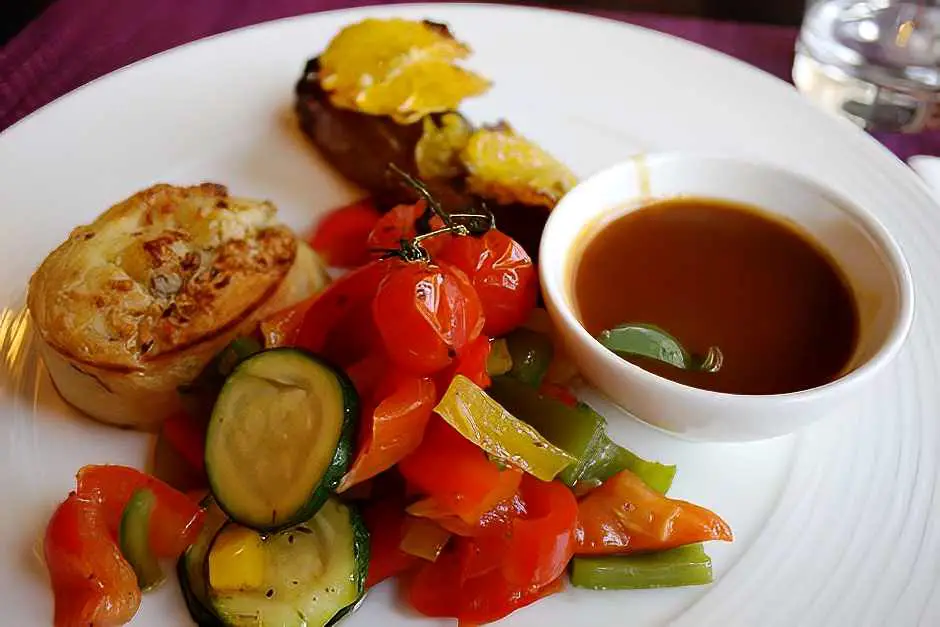
Traditional Luxembourgish dishes – What is typical Luxembourg food?
What makes Luxembourg food typical are traditional dishes such as Judd mat Gaardebounen and Bouneschlupp. Pork neck with broad beans is even considered the national dish in Luxembourg.
Luxembourgish specialties
Luxembourg offers a rich culinary diversity, heavily influenced by its neighboring countries. When visiting, be sure to try the region's typical specialties, which combine local traditions and influences. Here are some of the best Luxembourg dishes you shouldn't miss. This list of the names of Luxembourg specialties will help you with more dishes to try when visiting a restaurant.
You should know these Luxembourg culinary specialties by name
| Grompere Kichelcher | potato pancake |
| Huesenziwwi | rabbit ragout |
| Kuddelfleck | a traditional dish made from rumen |
| Andouillette | sausage made from offal |
| Träipen | filled blood sausage |
| Kallefskapp | calf's head |
| Graffe Pati | terrine made from liver, pork, bacon, eggs, wine and spices |
| Feierstengszalot | meat salad |
| gebotschte Gromperen | fried potatoes |
| Biwwelamoud | Boeuf à la mode or sauerbraten |
| Judd mat Gaardebounen | A national dish in Luxembourg, pork neck with broad beans and potatoes |
| Choucroute | Sauerkraut |
| Verwurelte | carnival pastries from Luxembourg |
| Hiecht mat Kraiderzooss | pike with herb sauce |
| Chou Fleur Zopp | cauliflower soup |
| Kniddelen | flour dumplings |
| Mummentaart | topped apple pie |
| Quetschflued | plum cake |
| Rieslingspaschtèit | puff pastries with pork |
| Suet pudding | kidney fat cake |
| Wäinzoossiss mat Moschterzooss | sausages with mustard sauce and mashed potatoes |
| Kachkeis | cooking cheese |
| Bouchée à la reine | Puff pastry patties with chicken fricassee |
| Bouneschlupp | Luxembourg bean stew |
| Consomme diablotins | Broth with slices of bread topped with cheese and béchamel sauce |
| Feschfriture | Deep fried Nosel fish in batter |
| Ganâche | Cream of couverture and cream |
| Gratin de queues d'écrevisse | scalloped tails of crayfish |
| Lobster Thermidor | Lobster ragout baked with cream and mushrooms |
| Kanéngche mat Moschterzoos | Casserole with rabbit in mustard sauce |
| Loup de mer en croûte feuilletée | Sea bass in puff pastry crust |
| Mousses d'ecrevisses au Cliquot | Cream of crayfish refined with champagne |
| Ortolan au suc d’Ananas | Bunting in pineapple juice |
| Os à moelle | marrowbone |
| Pâté a Jelli | Pie with jelly |
| Poularde en vessie | Chicken cooked in a pig's bladder |
| Râpes des Vosges | Lorraine potato pancakes |
| Sauce Gribiche | cold sauce with egg, capers, gherkins, mustard and herbs |
| Schmier | Luxembourg spread |
| Sole a l'Oseille | Sole with sorrel |
| Stoffi | Luxembourg cottage cheese |
| Truite farcie braisée au porto | Trout stuffed with port wine sauce |
| Coucou de Malin | Mechelen cuckoo, chicken species from Flanders |
| Crémant | Luxembourg champagne |
| Entrecôte Bercy | Stick with white wine shallot sauce, parsley and cress |
| Frell am Riesling | Trout in Riesling |
| Gramigna | short noodle |
| Klappschmant | whipped cream |
| Sauce Choron | Variant of Béarnaise sauce with tomato paste |
| Tarte Tatin | Apple pie baked upside down |
| Vol-au-Vents | Puff Pastry Patties |
Recipes for Luxembourg specialties
In our recipe overview you will find traditional Luxembourg Food Specialties Recipesthat you can easily cook yourself. Whether you prefer savoury or sweet – here you will find inspiration for every taste. So grab the ingredients and bring a piece of Luxembourg to your plate!
Influences on Luxembourg culinary specialties
Of course there are even more Luxembourgish specialties. But with these dishes you can get further as a traveler.
German roots in the cuisine of Luxembourg
On our trip we also learned that along the border with Germany you can often find dishes that have been adopted from the cuisine of neighboring regions. Germany has also left its mark on Luxembourg cuisine. The dishes are often hearty and filling. A good example is Judd mat Gaardebounen, a hearty dish of smoked pork and broad beans. The love of potatoes and sausage also shows the German origins.
Influences of French cuisine on Luxembourg's culinary specialties
The proximity to France is clearly reflected in Luxembourg's cuisine. You will find many dishes here that are refined with a pinch of French finesse. For example, the use of sauces and spices is very French. Desserts such as omelette soufflée au kirsch also show the French influence.
Portuguese influences
Yes, you heard that right. The cuisine of Portugal has also found its way to Luxembourg. The use of fish and seafood in particular is a clear sign of this. In Luxembourg, for example, you will find dishes prepared with spices and ingredients from Portugal.
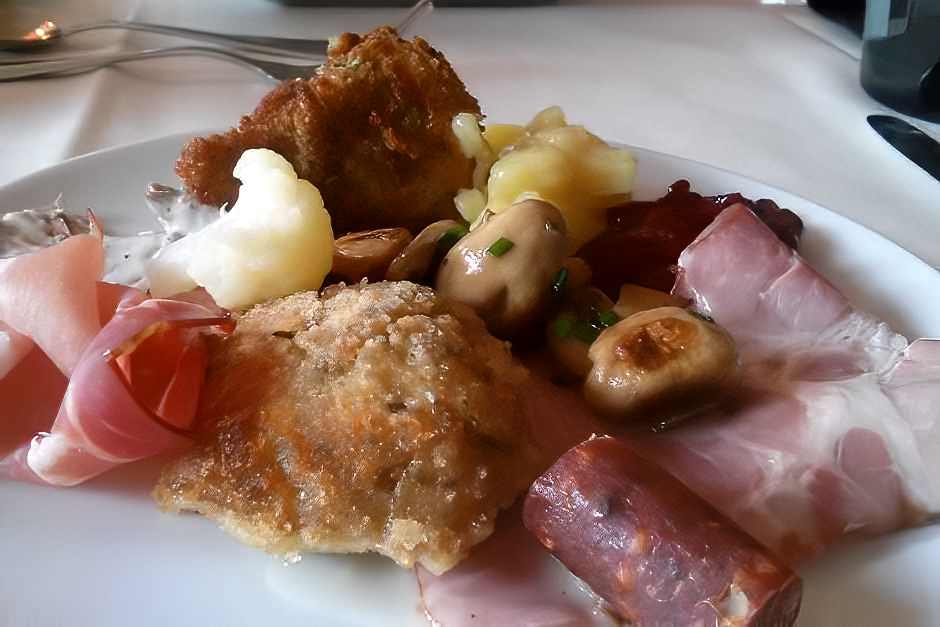
Luxembourg culinary specialties that are popular
Judd mat Gaardebounen
One of the dishes that particularly impressed us in Luxembourg was Judd mat Gaardebounen – a true classic of Luxembourgish cuisine. Many even call it Luxembourg's national dish, and we now understand why: Judd mat Gaardebounen is a hearty dish in which a succulent piece of smoked pork is slowly cooked until it melts in the mouth. It is served with fresh, green broad beans braised in a creamy sauce. The combination of the smoky aroma of the meat and the mild sweetness of the beans makes this dish a true treat, warming and satisfying, especially on cooler days.
Bouneschlupp
Another traditional dish we discovered during our culinary foray is Bouneschlupp. This is a hearty green bean soup, often served in Luxembourg as a comfort food on cold days. Fresh green beans are cooked with diced potatoes and onions in a rich broth. Often refined with pieces of bacon, the soup exudes a savory aroma that evokes memories of cozy family meals. Served with a piece of fresh farmhouse bread, the comfort is complete.
Kniddelen
We were also really impressed by the Kniddelen (kniddels). These are soft, hand-formed flour dumplings that are considered a true comfort food in Luxembourg. After cooking, they are often tossed in a pan with golden-brown fried bacon and onions, giving them an irresistible aroma. Their tender texture and hearty flavor make them a popular dish, served both as a main course and as a side dish.
Quetschentaart and Omelette soufflée
For dessert, we feasted on two classics: the Quetschentaart, a fruity plum cake that reminded us of our childhood, and the airy Omelette soufflée, which was so light it almost melted in our mouths.
What we particularly liked about Luxembourg's culinary specialties? They are down-to-earth, homemade, and full of flavor—exactly what defines Luxembourgish home cooking.
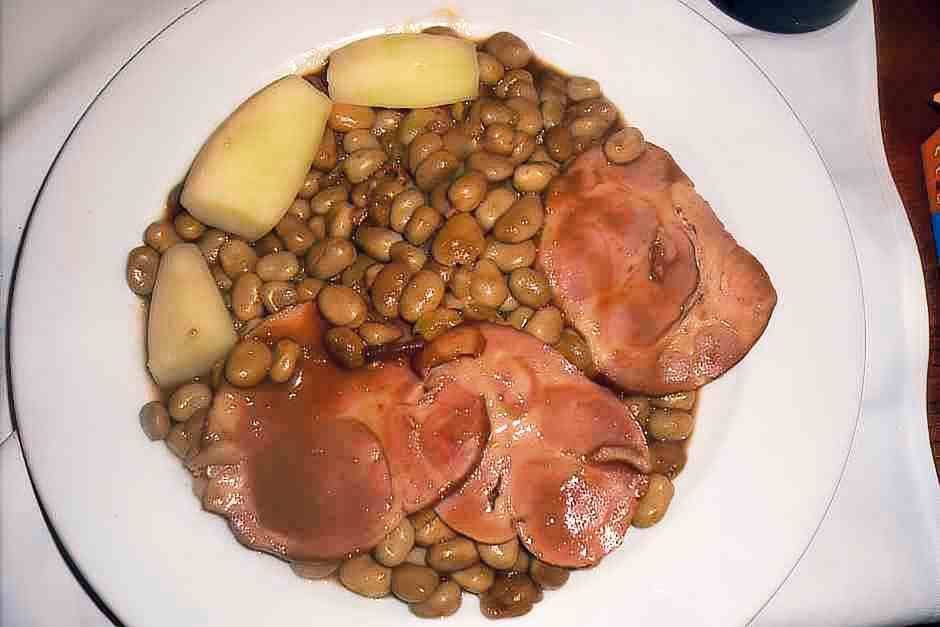
These Luxembourgish dishes are real highlights
Judd mat Gaardebounen as the national dish of Luxembourg: Luxembourg culinary specialties
When we first saw Judd mat Gaardebounen on the menu in Luxembourg, we immediately knew we had to try it. The name alone sounded intriguing – and the dish itself even exceeded our expectations. The tenderly cured pork neck, served with robustly spiced broad beans, is a true heavyweight among Luxembourg specialties – in the best sense of the word! Hearty, filling, and absolutely authentic – exactly what you'd imagine traditional Luxembourgish food to be.
What particularly fascinated us was not only the taste, but also the history behind this dish. Today, it is considered the national dish of Luxembourg, even though its origins remain somewhat obscure. During our stay, we encountered various explanations as to where the name Judd might have come from. One particularly interesting theory comes from a Luxembourg linguist. Jean-Claude MullerHe suspects that Judd derives from the Spanish word for bean – judía. In fact, there is a similar dish in Galicia with beans and pork. Perhaps Spanish troops brought this recipe idea back in the 16th or 17th century?
We also found the second theory a bit curious: According to it, the name could be derived from the Spanish word judío (Jew) – because of the dark color of the beans. Today, this origin is viewed rather critically, but it demonstrates how deeply rooted and complex Luxembourg's culinary culture is.
For us, Judd mat Gaardebounen remains one thing above all: a genuine piece of homemade Luxembourgish cuisine that not only satisfies but also makes you curious for more – more stories, more taste, more Luxembourg.
Did you know what gebotsche Gromperen are?
This side dish is simple but delicious. The main ingredient is potatoes, which are processed into a rustic puree. The addition of onions and bacon is typical for orderly gromperen. This combination gives the dish its flavor. In Luxembourg it is often served with meat dishes, especially sauerbraten. The preparation is uncomplicated: boil the potatoes, mash them, fry the onions and bacon, fold them in. This creates a hearty, filling dish. Ideal for chefs who appreciate authentic, regional recipes.
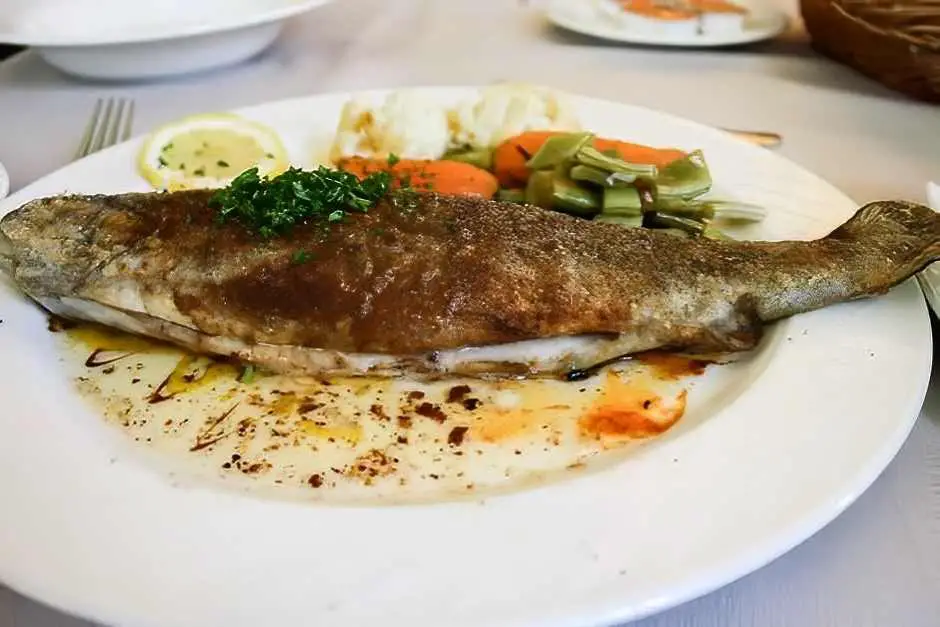
Products from the region are Luxembourg specialties
I also find it fascinating that Luxembourg produces a wealth of regional specialties. There's ham from the Ardennes, for example, or pork in aspic. In the wine regions, there's Rieslingpaschtéit, for example. Rieslingpaschtéit is a fine pâté made from delicate puff pastry with a fine meat filling, which has been refined with Luxembourg Riesling wine. When cut, a tantalizing aroma unfolds, heightening the anticipation of the first bite. This delicacy is often served in thin slices and is perfect as an appetizer or sophisticated snack.
Rivers like the Moselle and the Untersauer also provide fish that's on the menu in the valleys' restaurants. These include trout, pike, and even crayfish. If you're looking to buy regional products for souvenirs, look for the "Produit du Terroir" seal. Only products produced in the region are allowed to carry this quality seal.
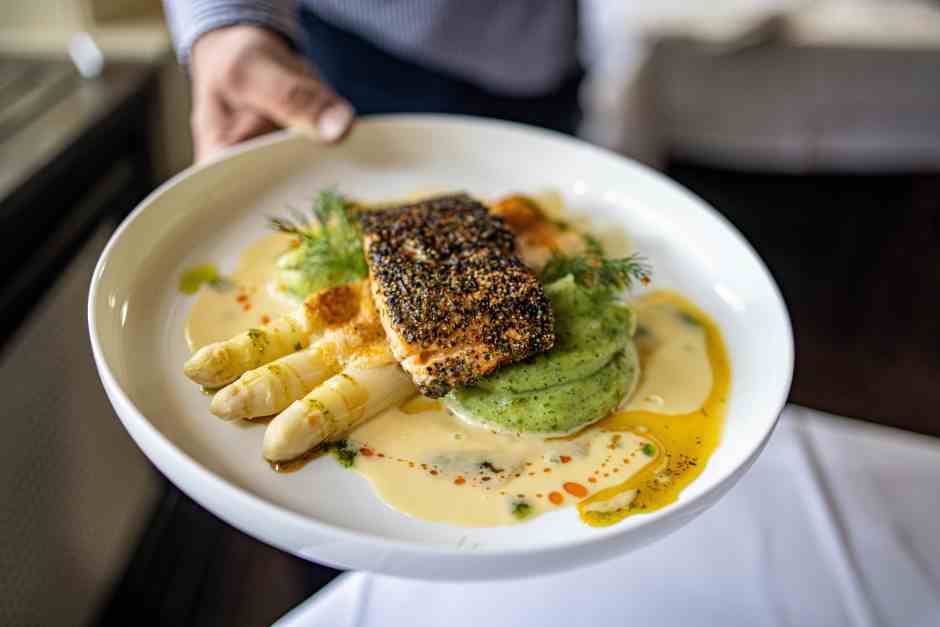
Seasonal Luxembourg specialties
Spring:
In spring, dishes featuring fresh asparagus and young herbs are popular. Many restaurants offer special spring menus highlighting these ingredients.
Summer:
Light dishes such as salads with regional vegetables and grilled fish are the focus. The wine festivals along the Moselle also offer a variety of culinary delights.
Autumn:
Autumn is the season for game dishes and mushroom specialties. Restaurants serve, for example, Huesenziwwi (rabbit stew) and dishes with fresh wild mushrooms.
Winter:
Hearty stews such as bouneschlupp (bean soup) and dishes with sauerkraut are typical winter dishes offered in many traditional restaurants.
Luxembourg wine and beer with the Luxembourg specialties
In addition to Luxembourg's cuisine, the country also offers local drinks that you should also try.
Moselle wines from Luxembourg
The wines from the Moselle region are a real pleasure. White wines such as Riesling, Pinot Blanc and Gewürztraminer are particularly popular. They are often fruity and have a pleasant acidity. These wines go perfectly with many Luxembourg dishes.
Luxembourg beer
Beer is another highlight. Although Luxembourg isn't as well-known for its beers as Belgium or Germany, there are some local varieties available. Mousel, Bofferding, and Battin are three of the best-known brands. They offer a good alternative to wine and are especially popular in social gatherings.
Crémants: The Luxembourg sparkling wine
If you're looking for something special, try a Crémant from Luxembourg. These sparkling wines are of high quality and are often enjoyed as an aperitif. They are the perfect choice for festive occasions or simply to spend a nice evening.
Liqueurs and spirits are also among the Luxembourg specialties
Luxembourg also has a selection of liqueurs. Eau de vie is an example of this. These schnapps are often distilled from local fruits such as plums or pears. They are strong, so be careful when consuming them!
Conclusion: Typical specialties from Luxembourg are hearty
The typical food in Luxembourg surprised us. We had expected to feel the influence of fine French cuisine. However, this can only be found in the restaurants and hotels in the European Quarter. However, this food has little to do with the specialties. Instead, specialties from Luxembourg are down-to-earth. For example, you can easily imagine how grandma or mother puts Kniddelen on the table. Or how Jupp mat Gaardebounen is served to a family on holidays. The influences from the surrounding countries also come more from the kitchens of housewives. They therefore go well with the dishes from the country's cuisine. Let our tips inspire you to try these specialties. It's worth it. But you have to be hungry, because the portions are large. In any case, we hope you enjoy your meal!
Discover Luxembourg specialties on these tours
If you book one of these offers, we receive a commission, which we use to run this blog.
About the authors
Monika and Petar Fuchs are experienced travel bloggers focused on culinary discoveries around the world. They have been publishing their gourmet travel blog, TravelWorldOnline, since 2005. Monika has also written articles for well-known travel magazines and the renowned newspaper DIE ZEIT. At the invitation of the Luxembourg Tourism Authority, they explored the culinary region of Luxembourg. They sampled traditional specialties such as "Judd mat Gaardebounen" and discovered fine wines from the Moselle region. Their journey took them to charming villages, weekly markets, and family-run restaurants—always with the goal of capturing authentic taste experiences. Their impressions flow directly into their travel reports and provide readers with real insider tips for gourmets.
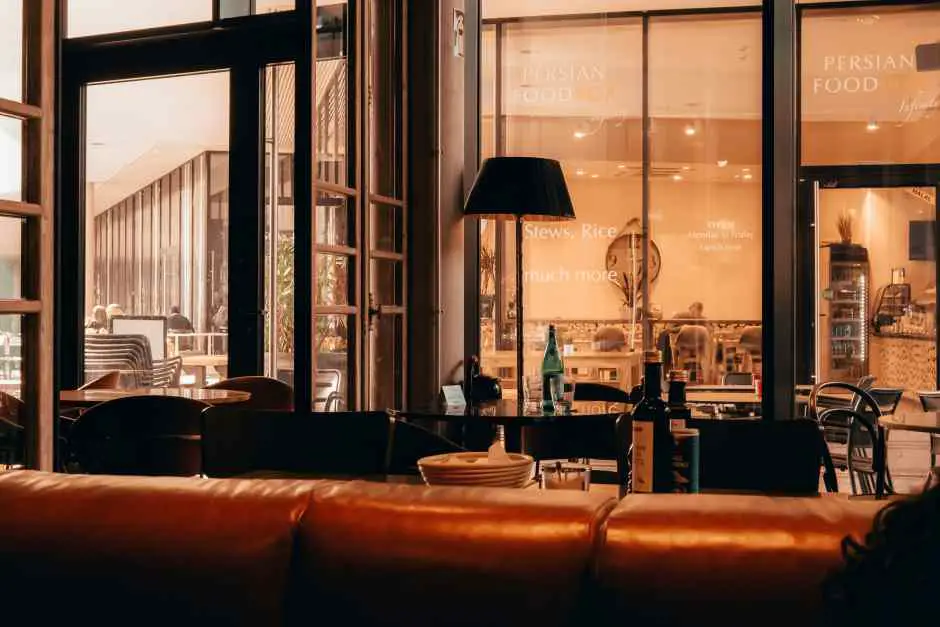
Questions and answers about Luxembourg specialties
Are there vegetarian or vegan options in restaurants in Luxembourg?
Yes, many restaurants in Luxembourg also offer vegetarian and vegan dishes, such as vegetable stir-fries, salads or dishes with pasta.
Which drinks are popular in Luxembourg and go well with Luxembourg culinary specialties?
Popular drinks in Luxembourg are beer, especially “Battin” beer, as well as local wines such as Riesling or Elbling.
Do I have to tip in restaurants in Luxembourg?
Tipping is customary in Luxembourg. A common practice is to tip around 10% if the service was good. Since 2024, there has been a stronger trend toward cashless payments. Card payments with tips are possible everywhere.
Should I book a seat at restaurants in Luxembourg?
It is advisable to book a table at popular or upscale restaurants, especially on Saturday and Sunday or during holidays. This will ensure you get a table.
When are restaurants open in Luxembourg?
Restaurants in Luxembourg open at similar times to other European countries. Many restaurants open for lunch around 12:00 p.m. and dinner around 18:00 or 19:00 p.m. However, note that some smaller restaurants may be closed on certain days.
Are there any special customs I should pay attention to in restaurants in Luxembourg?
In Luxembourg it is customary to leave your cutlery on your plate while eating. When you're done, place your cutlery parallel to the plate. This shows that you are finished. It is also polite to say “Enjoy your meal” before eating and “Thank you” after eating.
When is the best time for culinary trips to Luxembourg?
It depends a bit on what you're in the mood for—but generally speaking, Luxembourg is a great destination for connoisseurs all year round. Things get especially exciting in spring and autumn, though.
In spring, from April to June, many farmers' markets open and nature awakens everywhere – perfect for trying regional products such as asparagus or strawberries fresh from the field.
Autumn (September to October) is the grape harvest season. Everything revolves around Mosel wines, and in the wine-growing villages, you'll find plenty of wine festivals where you can enjoy not only the fine wines but also savory specialties like tarte flambée or Riesling pasta.
In winter, there are also cozy Christmas markets with Luxembourgish delicacies like Gromperekichelcher and mulled wine – ideal for those who like a rustic feel. My tip: If you want to avoid the crowds, travel during the week or outside of school holidays. This is when you'll have the best chance of getting a seat at the most popular restaurants!
Where can I find food festivals in Luxembourg?
Luxembourg may be small, but the selection of food festivals is truly impressive! A highlight is definitely the Eat it! Luxembourg Street Food Festival in Luxembourg City, which takes place regularly in spring and autumn. There you can expect international specialties, as well as Luxembourg classics with a modern interpretation – ideal if you want to try something new. Also very popular is the Wine Taste Enjoy Festival in Remich, where everything revolves around Moselle wine and regional products. If you fancy traditional cuisine, a trip to the Viandener Fuesend, a traditional folk festival with hearty dishes such as Judd mat Gaardebounen and Träipen. Smaller towns such as Echternach or Clervaux also regularly hold culinary markets and food festivals where you can get authentic products directly from local producers. My tip: also stop by for events such as the Fairy tale (Weekly markets) Look out – they may be smaller, but they often offer really great regional specialties to try and take home!
What do people typically eat in Luxembourg?
Luxembourg's cuisine is an exciting blend of French, German, and Belgian influences – with its own unique, down-to-earth character. Among the classics is "Judd mat Gaardebounen," a hearty dish with cured pork neck and broad beans. Also popular are "Gromperekichelcher," crispy potato pancakes served at markets or festivals. For a sweeter twist, try "Quetschentaart," a traditional plum cake. Other typical specialties include tarte flambée, Rieslingspaschtéit (pie with Riesling sauce), and Bouneschlupp (green bean soup). The cuisine emphasizes regional ingredients, hearty flavors, and no-nonsense enjoyment – ideal for foodies with a heart for authenticity.
Where can you eat well in Luxembourg?
Luxembourg culinary scene offers much more than meets the eye. In the capital, Luxembourg City, you'll find everything: from fine dining (e.g., in Clausen or Grund) to cozy bistros serving regional home-style cooking. Small, charming rural restaurants, such as those in Echternach, Remich, or Clervaux, often serve seasonal dishes made with local ingredients. A real insider tip are weekly markets and village festivals, where you can buy Gromperekichelcher (cheese) or local wines directly from the producers. If you're looking for a stylish experience, book a culinary tour through the Moselle region—with wine tasting included. Luxembourg may be small, but it's big on culinary delights!
We would love to hear your opinion about Luxembourg specialties!
Have you ever tried Luxembourg specialties, or is there a dish you particularly recommend? Maybe you even have your own recipe that you would like to share with us? Let us know in a comment what your favorite Luxembourgish dishes are and why.
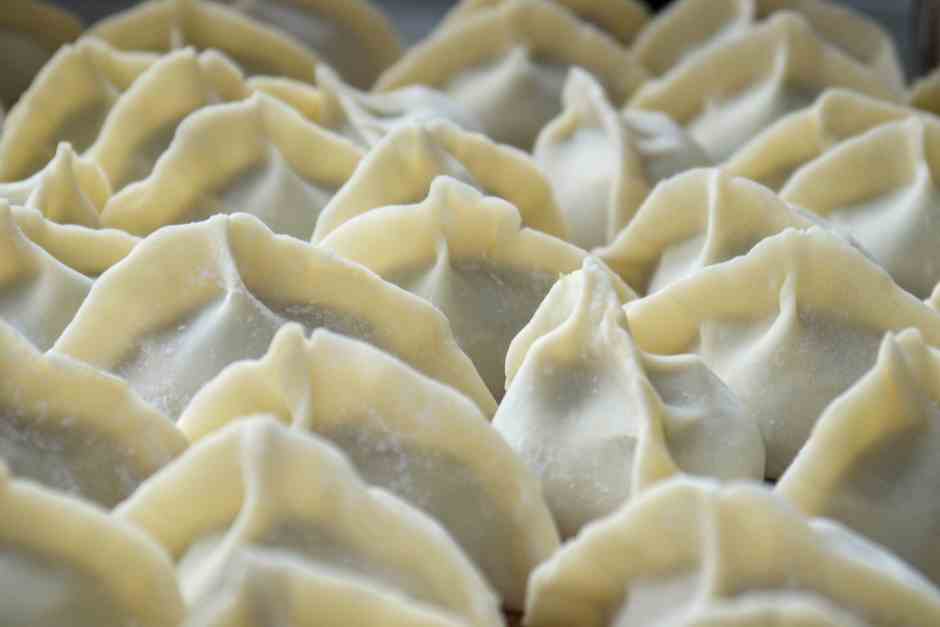
What is Luxembourg known for?
- Financial center: headquarters of many banks and funds.
- UNESCO World Heritage Site: Old town of Luxembourg city.
- Multilingualism and international community.
- Schengen Agreement: this is where it came from.
- Castles and palaces: buildings like Castle Vianden.
- viticulture: Region on the Moselle for excellent wines.
- Modern buildings: Iconic buildings.
- Nature parks: Müllerthal, “Little Switzerland in Luxembourg”.
- Europe's Offices: Seat of Europe's highest court.
- High security and prosperity.
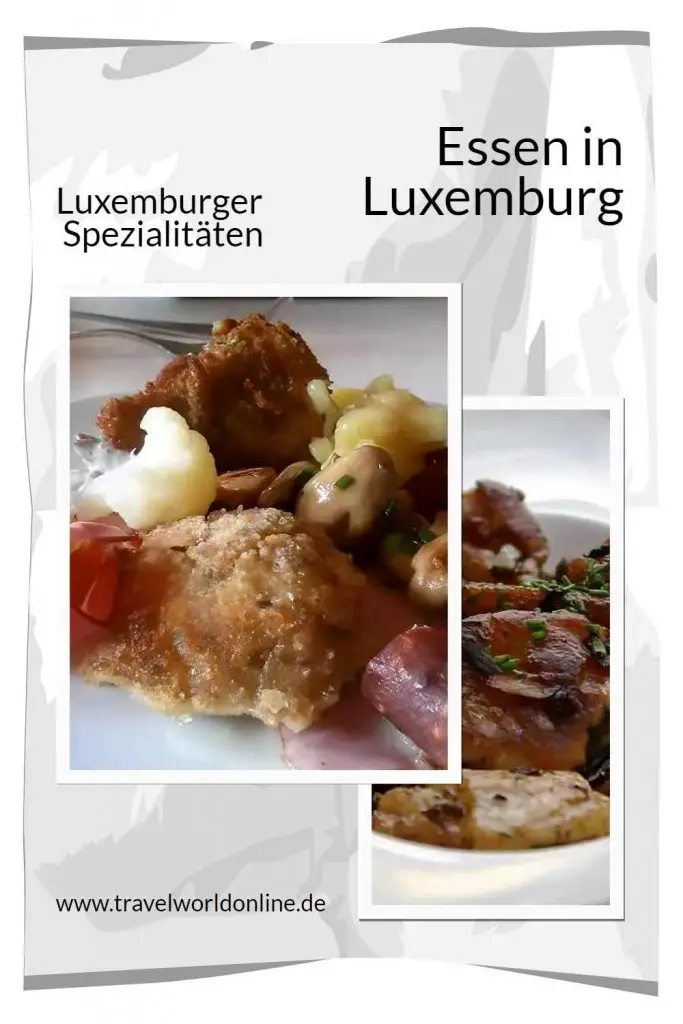
Do you know this?
- Castle Vianden in Luxembourg
- Our best travel tips for Luxembourg
- Hikes on the Moselle
- Franconian cuisine tastes delicious
- Snickerdoodles recipe
- Sweet and sour pork – my recipe
Source Luxembourg culinary specialties: own research on site. Our opinions definitely remain our own.
Text Luxembourg culinary specialties: © Copyright Monika Fuchs and TWO
Photos of Luxembourg culinary specialties: © Copyright Monika Fuchs and TWO
Video Luxembourg culinary specialties: © Copyright Petar Fuchs and TWO
Stand: May 2025
